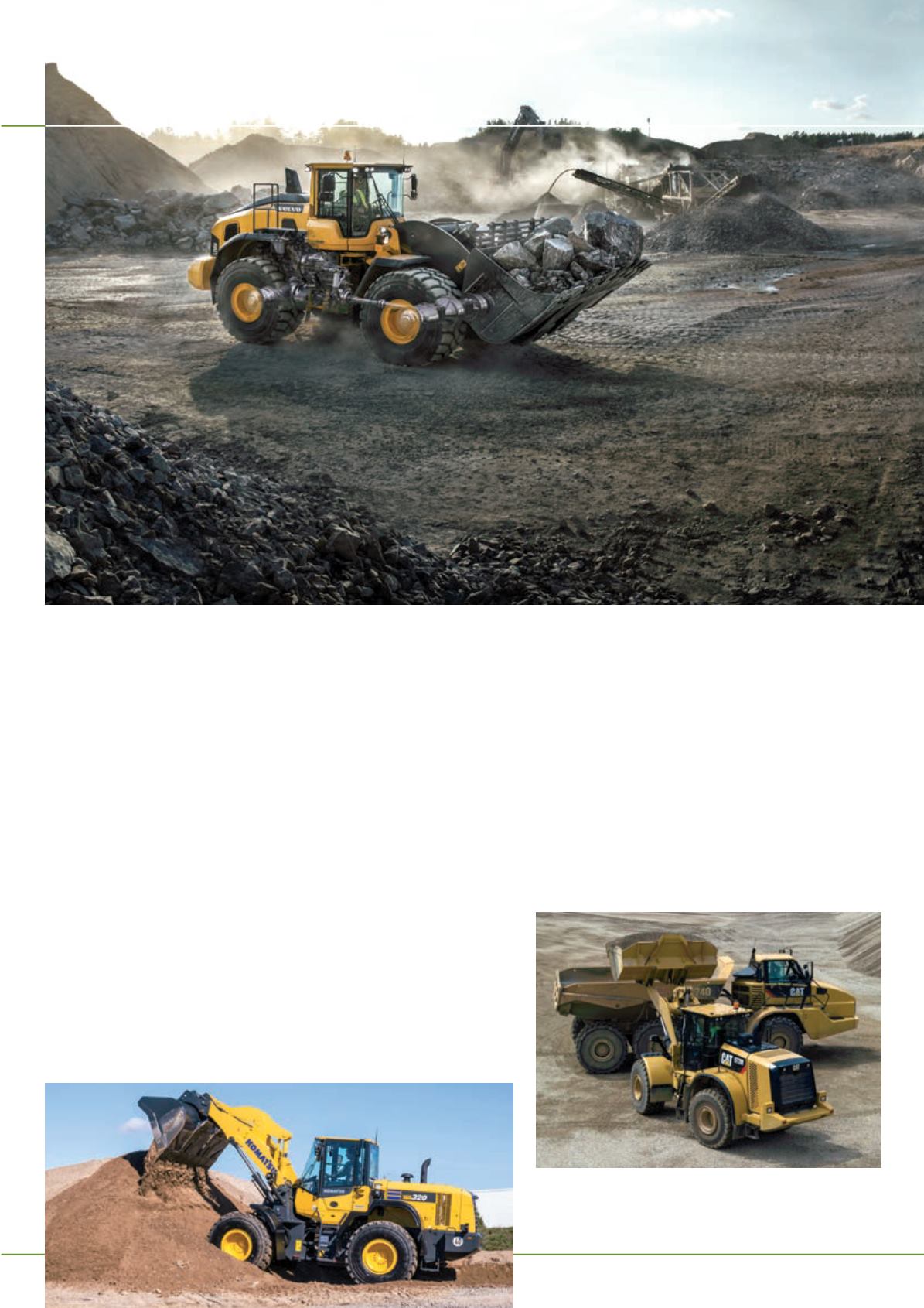
25
september 2014
international
construction
Economy
drive
Different engine regulations in developed
and emergingmarketsmeanwheeled
loaders now vary a lot from country to
country. However, the drive to increase
fuel efficiency is common around the
world.
Chris Sleight
reports.
M
ore and more of the wheeled loaders being sold in
Europe, Japan and North America are now fitted
with a new generation of low emission engines. Stage
IV (Europe) and Tier 4 (US, Canada and Japan) requirements
started to come into force last year.
It takes timeafter the implementationdate for thesenewengine
machines to reach themarket.Manufacturers are allowedvarious
flexibility provisions to use up stocks of older engines as well as
sell other ‘oldTier’ machines once the new laws have come in.
But as time goes on thesemachines work their way through the
system, and more and more Tier 4/Stage IV loaders find their
way to construction sites.
Many other parts of the world also have emissions regulations
that apply towheeled loaders and other off-highway equipment
for construction, mining and agriculture. At present the most
stringent of these is the equivalent to the older Stage IIIA/Tier 3
laws.Andof course there aremanyparts of theworldwhere there
are no emissions regulations at all.
Themain reason lesser regulated countries have stopped atTier
3 levels is that above this fuel qualitybecomes a critical issue.The
various aftertreatment systems used to achieve Stage IIIB/Tier
4 Interim and Stage IV/Tier 4 Final require ultra low sulphur
diesel – about 10 or 15 parts per million(ppm) of sulphur. Any
higher than this and exhaust after treatment systems like diesel
particulatefilters (DPFs) and selectivecatalytic reduction systems
(SCR) get cloggedwith soot, and the enginewill overheat.
Sountil ultra low sulphur diesel iswidely available in emerging
markets, these countries will likely stay atTier 3 emissions levels
at best, even though many governments have a desire to make
regulationsmore stringent.
Parallel development
This divergence of developed and emergingmarkets has had an
impact on the models manufacturers produce. Wheeled loader
makers that want to be global now have to produce at least
two ranges – a Tier 4 model for developed markets and a Tier
3 model for lesser regulated countries. Some would also argue
the need for a ‘Tier 0’ machine, as in many countries a Tier 3
modelwouldbe over-sophisticated (uncompetitivelypriced) and
WHEELED LOADERS
Economy drive
Volvo’s Stage IV-compliant L250H is said to offer 18% better
fuel economy than its predecessor thanks to the company’s
Optishift drivetrain technology.
Caterpillar’sM-seriesmedium sizedwheeled loaders are
availablewith its XE technology, a continuously variable
transmission delivering -25% lower fuel consumption than
machineswith traditional drivelines.
Komatsu’s
WA320-7 features
the company’s
parallel Z-bar
front end, which
gives it good
breakout forces as
well as the ability
to parallel lift.
>


